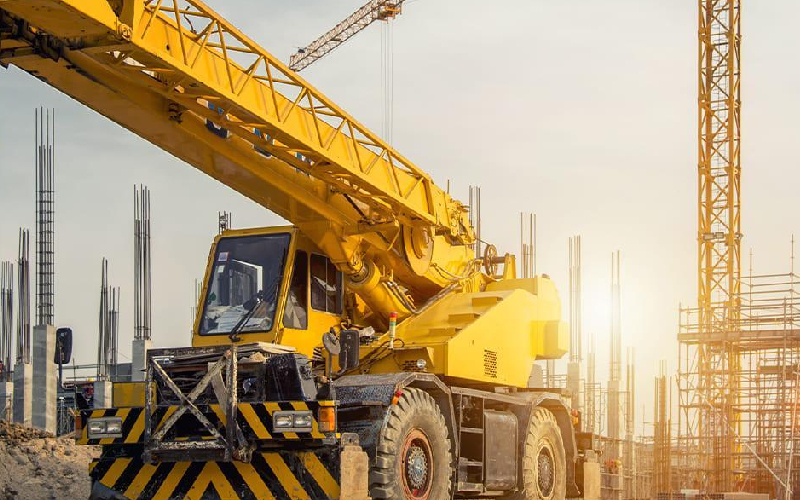Heavy Lifting in Confined Spaces: Equipment and Planning Tips
Most people think of cranes on big open sites, swinging steel beams into place under the desert sun. Truth is, some of the most difficult heavy lift jobs in the UAE happen where space is limited, cramped service shafts, underground utility rooms, rooftop platforms boxed in by buildings. That’s the real challenge.
As someone who’s worked on lifts in places where you can barely stretch your arms, I’ll tell you this: success in these jobs doesn’t come from brute force. It comes from careful planning, the right equipment, and a team that knows how to move with precision. Let’s break down how heavy lifting in confined spaces really works and what you need to pull it off safely.
What Makes Confined Lifting So Difficult?
You’re not just fighting gravity, you’re fighting geometry.
We’ve done lifts where we had only a meter of clearance on each side, with beams running overhead and no room to bring in a standard mobile crane. You must ask yourself:
- Can the load even fit through the access point?
- How do you stabilize the crane without outriggers going wide?
- Is the floor strong enough for the equipment weight?
This is where a crane rental company in UAE that understands local environments can make all the difference. They’ll ask these questions before you even step on site.
Essential Equipment for Confined Jobs
Let’s talk gear. You can’t just grab any crane and expect it to work in tight quarters.
Spider Cranes
These things are a game changer. They collapse small, walk on stabilizing legs, and fit through standard doors. We once used one in a hotel boiler room—brought it in on a freight elevator.
Mini Crawler Cranes
Great for when you’ve got a narrow path but still need decent lift power. They have low ground pressure, which means you can use them indoors without tearing up floors.
Hydraulic Gantries
If you can’t go overhead, you go up slow. Gantries are perfect for lifting loads vertically in low-clearance environments. They lift steady and with less risk of sway.
Air Skates and Rollers
When vertical lift is impossible, sliding is your friend. These let you move heavy equipment horizontally, especially in places where you’d never get a crane in.
The trick is choosing the tool that fits both the job and the site. Not every team—or provider, can help you do that.
Planning: Where Most Lifts Succeed or Fail
The lift begins at the planning table. If your blueprint assumes perfect conditions, it’s already flawed.
Site Visit Comes First
No guesswork. You walk the space, measure every access point, note obstructions, check floor integrity. We once delayed a job by a week because no one noticed a suspended ceiling had hidden pipes.
Use Modeling if You Can
We’ve started using 3D software on big projects. It’s not just fancy visuals—it shows you your dead ends before you hit them in real life.
Load Path Planning
It’s not just about lifting the load. Where’s it going? Is the destination ready? Do you need to rotate or lower it into a pit? You plan the route like a chessboard, every move, every angle.
If you’re working with a heavy lift company in UAE, they should walk you through this. If not, walk away.
Safety Is Not Optional Here
Lifting in tight spots adds more hazards. There’s less margin for error and fewer escape options if something goes wrong.
Here’s what you don’t skip:
- Pre-lift toolbox talks with every crew member
- Spotters on every critical turn
- Backup gear and rigging inspections
- Emergency procedures (yes, even for small lifts)
Stats from lifting audits across MENA show confined space lifts have a 30% higher risk of equipment contact incidents. That’s not theoretical. We’ve had near-misses when teams skipped rehearsals.
Real-World Example: Downtown Dubai
We had a rooftop lift in the financial district. Tight alley access, eight floors up, surrounded by glass towers. No street crane could get in.
We brought in a spider crane in sections. Carried it up the service elevator. Reassembled on-site. Lifted a 1.2-ton HVAC unit with 5 cm of swing clearance. Took six hours of prep for 30 minutes of lifting but zero issues. That’s what counts.
Anyone doing heavy lifting Dubai city sites knows this isn’t unusual. You need creativity, not just horsepower.
Regulations, Permits, and Local Insight
Everyone is familiar with the concept that the UAE has strict safety codes, especially in city centers. A crane rental company in Dubai that’s worked in your district before. Big advantage. They’ll already know how to file permits, which roads require police sign-off, and what time windows you’re allowed to lift.
You don’t want to find out at 6 a.m. that your crew can’t start because your load route crosses a protected zone.
Final Thoughts
Confined space lifting isn’t about doing more with less; it’s about doing smarter with smaller.
If you’re not factoring in space, surface, entry angles, and airflow, you’re not planning, you’re hoping. And hope doesn’t hold weight.
Whether you’re prepping a utility room in Sharjah, a mechanical shaft in Abu Dhabi, or a rooftop platform in Media City, choose equipment made for small footprints and work with crews that think before they lift.
That’s the only way to get the job done safely and on time.
And if you’re looking for a crane rental company in Dubai with actual confined space experience not just glossy brochures, Safest Lift has been on-site in the toughest spots, from luxury hotels to high-security data centers.
They get it. And that makes all the difference.



